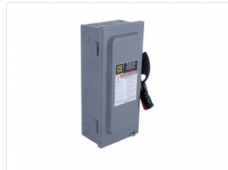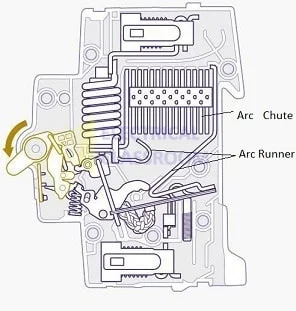MarkSolar
Solar Enthusiast
I have a Square D disconnect that's rated for DC 600v and 60A that's the size of a small desktop computer, weighs 10# and could survive a direct nuclear strike, it looks like this:

On the other hand this PV disconnect is rated even higher for DC 1000V and 64A, it's made out of plastic, it's the size of a rubik's cube, weighs a half pound and looks like something I could make in my garage on a 3D printer:

So what's inside that little plastic switch that allows it to suppress the arc created when you switch on/off a 1000v/64A connection without vaporizing the plastic? The inside of my square D disconnect has huge metal blades and composite partitions to prevent arcing over to the other pole on the switch. How is this being done in this little plastic box? I'm tempted to buy one just to take it apart.

On the other hand this PV disconnect is rated even higher for DC 1000V and 64A, it's made out of plastic, it's the size of a rubik's cube, weighs a half pound and looks like something I could make in my garage on a 3D printer:

So what's inside that little plastic switch that allows it to suppress the arc created when you switch on/off a 1000v/64A connection without vaporizing the plastic? The inside of my square D disconnect has huge metal blades and composite partitions to prevent arcing over to the other pole on the switch. How is this being done in this little plastic box? I'm tempted to buy one just to take it apart.




